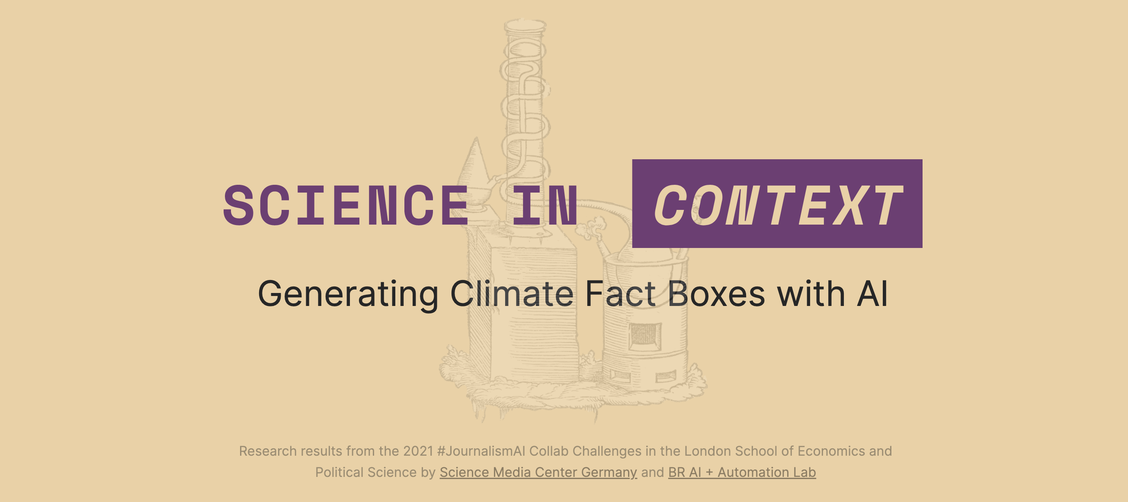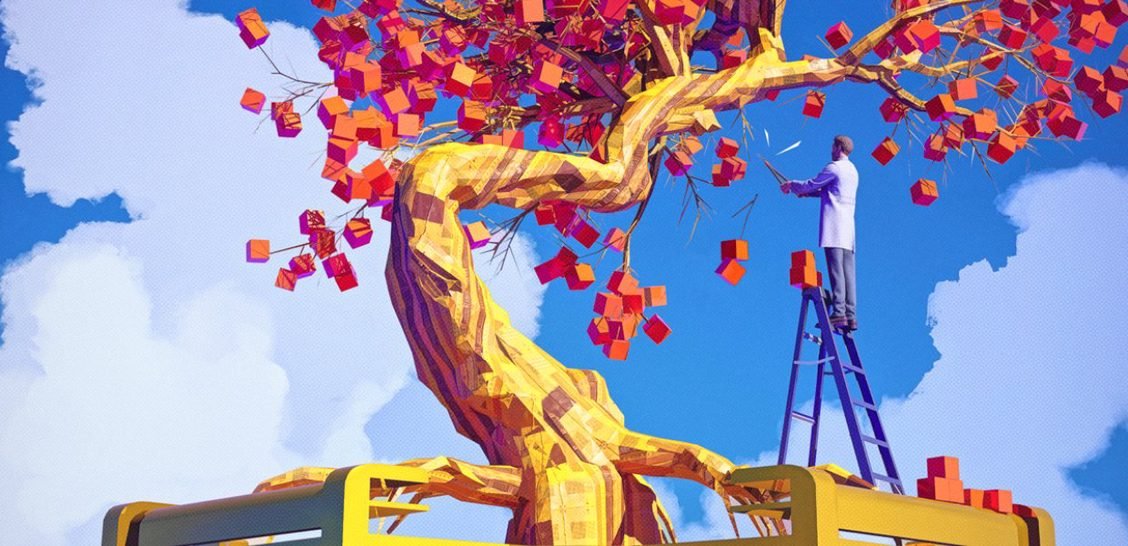AI & Local News newsletter, issue 6
Hello, Welcome to the sixth issue of the AI & Local News newsletter. The first cohort of the AI & Local News Challenge is underway with our teams Information Tracer, Localizer, Overtone, SimPPL, and Social Fabric for Publishers. Learn more about what the teams are working on in our announcement.
Keep an eye out for upcoming events from Associated Press and the Brown Institute’s Local News Lab. We’ll share more info on those soon.
Finally, I want to acknowledge this solemn time as Ukraine is invaded by Russia. Take a look at two Ukrainian news organizations — The Kyiv Independent and Zabarona — that publish in English. (Here’s how The Kyiv Independent got its start.) Read this statement of solidarity from the European Federation of Journalists and their call for journalists’ security.
Matt MacVey
Community & Project Lead, AI & Local News
NYC Media Lab
Matt@NYCMediaLab.org
PS If this email was forwarded to you, you can easily sign up here. Take a look at our newsletter archive to learn more.
Partner News
Associated Press: Learn more about their work here.
Brown Institute’s Local News Lab: “The lab is currently working on deploying our recommendation system to our partner sites The Philadelphia Inquirer and The Texas Tribune. We are utilizing what’s known as a “canary deploy” process through which the product is only visible to a small percentage of the audience at first (in this case 1%) so we can see how it performs in the wild with minimal risk and an easier roll-back should things go awry. Our infrastructure engineer, Sylvan Zheng, delivered an engaging workshop on a/b testing for The Texas Tribune, in order to share best practices and help inform our strategy which will help us evaluate the model.
We’re excited to report back on all the learning we and our partners have done in this first cohort and will be hosting another community call in the spring to share the experience with other local news leaders and product folks. Applications for our next cohort will open in April — we are looking forward to collaborating with new partners soon. Stay tuned for more information on all of this in the next update.”
NYC Media Lab: “NYC Media Lab is thrilled to announce the inaugural cohort of the AI & Local News Challenge!
Over the first half of 2022, the five selected teams — Information Tracer, Localizer, Overtone, SimPPL and Social Fabric for Publishers — will build AI applications for local news. The teams represent a dynamic mix of technological and journalistic backgrounds, ranging from news organizations and startups to university research and development.
We were happy to be featured in the newsletter of Challenge participant Overtone. The Overtone newsletter is a weekly conversation about ‘making the internet a better place and the metrics that we need to get there.’
Now hiring for a Director of Partnerships at the NYC Media Lab. Check out our jobs page to learn more.”
Partnership on AI: Learn more about their AI & Media Integrity program here.
News
Every journalist’s best friend? Unraveling the risks of AI transcription
Politico journalist Phelim Kine investigates the privacy risks — including those posed by Chinese hackers — inherent to his favorite AI-powered transcription app: Otter.ai, which has virtually eliminated the once-painstaking task of writing up interview notes.
-
The privacy vs. utility tradeoff of using Otter or its peers is significant. Take the scenario of the journalist in question, who was interviewing Uyghur rights activists. In this case the sharing of personal data by Otter and other transcription apps to third parties is not only compromising, but potentially dangerous.
-
Otter confirmed that they use transcription data to improve the algorithm and do share data with third parties, but denied that it would ever share data with foreign governments. Regardless, the Freedom of the Press Foundation recommends that users protect data shared with these transcription apps by using strong passwords and two-factor authentication, and to download and delete transcripts from the app (pasting transcripts into a Word or other document instead) to reduce exposure risk.
-
What is really needed is a federal data privacy law–now at a standstill in Congress—that covers all corporate use of consumer data. Until such a federal law exists, journalists will need to carefully weigh the risks and benefits posed by transcription apps, especially when interviewing at-risk subjects.
(Hat tip to Aimee Rinehart of AP for drawing our attention to this article)
Spotlight on JournalismAI Collab Challenge Projects

20 news organizations from around the world–convened by JournalismAI, a project of Polis, the journalism think tank at the London School of Economics and Political Science (LSE) and supported by Google News Initiative — used artificial intelligence to understand how to boost audience engagement with and understanding of their content. Examples include autogenerating fact boxes in articles and improving recommendations for the read more section of an article.
How “La Nación” powers its journalism
“La Nación” now has its own AI lab where journalists, data analysts and developers work side-by-side. The 150-year-old Argentinian newspaper has used AI to produce stories that analyze song lyrics and map solar energy.
Events
News Product Alliance Summit 2022
Date: March 10-11
Call for Participation
News Product Alliance, a community of support and practice for news product thinkers, will host its annual summit virtually on March 10 and 11th.
EmTech Ai Conference
Date: March 29-30
More information
Digital transformations have triggered a data explosion that only AI can handle. To scale AI and remain competitive, organizations need to have the right strategies, data policies, and algorithms. MIT Technology Review’s AI conference, EmTech Digital, provides strategies, insights, and emerging AI techniques to put AI to work for business.
International Journalism Festival
Date: April 6-10
AI Sessions
All sessions are live-streamed, available for viewing during the festival on the festival website homepage.
Research Brief
Reshaping communication through values-driven AI

Faculty at USC Annenberg School for Communication and Journalism are leveraging AI to support local journalism — including mapping media bias and building community engagement.
Calls for Proposals
Pulitzer Center Launches AI Accountability Network
The Pulitzer Center is accepting applications for its new Artificial Intelligence Accountability Network. The Network seeks to support journalists to report onAI and with AI. The Center is also offering an AI Accountability Fellowship and Machine Learning Grants.
Podcasts
After Chess, AI is Conquering the Poker Realm
Artificial intelligence is conquering the world of poker. Keith Romer explores how AI and machine learning are changing the way this game is played. With an algorithmic “solver program” players can analyze their weakness and better understand the strategy of their opponents.
Food for Thought

The unpredictable future of AI, according to Deep Blue. IBM’s Deep Blue project was started in 1989, then beat the chess champion Garry Kasparov after seven years of training. The event was perceived at the time as the beginning of an era where computer “brainpower” would trounce mankind’s. After neural nets and the deep learning revolutions, scientists are still debating whether machines will get the last “think.”
This robot is my favorite bartender. An Estonian startup is revolutionizing the world of bars. Yanu.ai has just launched the prototype of a fully automated bar, with touch screens to order, a system of payment and a robotic arm able to mix and serve cocktails.
Using AI to unmask the pen behind QAnon. Two teams of scientists — Swiss start-up OrphAnalytics and a group of French computational linguists — used AI-powered stylometry to unmask the figures behind QAnon. The Swiss scientists used software to detect three-character patterns while measuring the complexity of vocabulary and syntax. The French team used artificial intelligence to learn writing patterns similarly to how facial-recognition software learns human features. Analyzing Q content from across the internet, Mr. Paul Furber was identified as the first “scribe” behind Q’s nonsensical messages, later replaced by Ron Watkins.
The AI and Local News partners are Associated Press, The Brown Institute’s Local News Lab, NYC Media Lab and Partnership on AI.
The initiative is funded by Knight Foundation.
Newsletter produced by Angelo Paura




